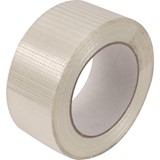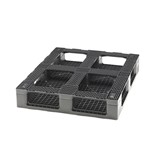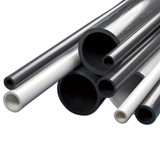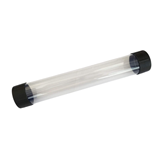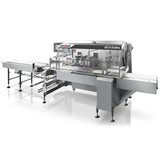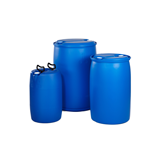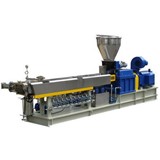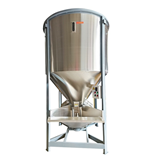A large variety of materials are currently used for food packaging. Any substance which migrates from the packaging into the food is of concern if it could be harmful to the consumer. Even if the migrating substance is not potentially harmful it could have an adverse effect on the flavour and acceptability of the food.
Legislation
In Australia, State Food Acts control the possibilities of such migration by general provisions governing the sale of food: they contain provisions that no person shall sell any article which is adulterated or falsely described, which contains any matter foreign to the nature of the food or which is packed or enclosed for sale in any manner contrary to any provision of the Act or the Regulations.
The Australian Food Standards Code, which complements the Food Acts, sets maximum migration levels for three specific monomers, the "building blocks" of plastics. These are vinyl chloride, acrylonitrile and vinylidene chloride. They are singled out for special attention because of their known potential toxicity. Modern manufacturing methods have reduced monomer residues in food contact plastics to the point where they are no longer measurable.
Numerous other packaging materials are used in contact with food including paper, fibreboard, glass, tinplate, aluminium and various types of plastics. Australian Standards, which are separate from food regulations, are used to define compositional requirements of a number of other plastics for food contact use. However these standards cover only six of the common plastics used in food packages and refer to the additives which may be used in their manufacture rather than setting limits on migration. The selection and control of these additives has been based on what is permitted in some overseas legislation.
Both the United States of America and the European Community either have, or are preparing, complex regulations to control migration from food packaging materials. In some instances these regulations set maximum limits for potentially harmful migrating substances. In other cases where migration presents a minimal hazard, permitted additives may be listed without specific limits being set. Some plastics contain a large number of additives including antioxidants, stabilisers, antistatics and plasticisers. These are included to improve the functional properties of the plastics.
Why the concern over migration?
Some of the additives used in plastics are more likely to migrate than others. The main concern in the past has been in connection with plasticisers which are used to improve the flexibility of some packaging materials. They are used in a range of plastics but particularly in polyvinyl chloride (PVC) films. Since it was recognised that in many PVC food contact situations these plasticisers would migrate, the plastics industry has moved to reformulate various grades of "cling" films to reduce the likelihood of plasticiser migration. There is no evidence that concentrations of plasticiser found thus far in food constitute a risk to human health, but unnecessary exposure to such contaminants must be avoided. This is the background to the more complex regulations now being developed internationally.
The use of plastic containers and films in cooking
As the tendency for plasticisers to migrate increases at higher temperatures, only those plastics specifically designed for oven use are suitable for cooking. While little confusion is likely to arise with the use of plastics in conventional ovens, their safe use in microwave ovens is more complex. Many plastic containers may appear to perform satisfactorily in the microwave oven, but their migration levels at high temperatures will not necessarily have been tested. This applies particularly to those food containers used to package chilled or frozen foods e.g. ice cream containers, which are not designed to be exposed to high temperatures.
RECOMMENDATIONS FOR THE USE OF PLASTICS IN MICROWAVE OVENS
Use only microwave-safe utensils.
While some packaging films may be labelled 'microwave-safe' care should be taken to avoid direct contact with the food when using them to cover containers or to reheat dinners on plates. Clean white absorbent kitchen paper may be a preferable alternative to prevent spatter.
As migration is more likely to occur into hot fatty foods, glass containers are a suitable choice for heating these products.
There are as yet no standards for claims such as "microwave safe"; if you are in doubt as to the safety of such materials you should contact the manufacturer for more details.
Developments in microwave packaging
Most commercially prepared foods designed for the microwave have been pre-cooked and frozen. These use relatively simple packaging systems which while designed for microwave use, have no potential application for re-use.
Recently shelf-stable microwaveable foods have also appeared on supermarket shelves. These involve more complex packaging systems which have been specially designed for use at high temperatures. They are therefore quite safe for microwave heating when manufacturers' instructions are followed.
Wrapping foods for the refrigerator
At lower temperatures, including refrigeration, migration of plastic components to a food may occur. This migration will be much slower than at higher temperatures. While there is no evidence that plasticisers migrate into even fatty products such as cheese at levels that pose a threat to health, if you wish to avoid using a plastic wrap with a relatively high plasticiser level, choose one which is clearly labelled "polyethylene".
Taint and odour
While paper and board materials may transmit taint or odour to a food, plastics have a much greater potential to do this. These taints may be residual monomer e.g. styrene. This is probably the compound usually responsible when consumers detect a 'plastic taste' in a food.
However most food packaging is printed and a number of the components of the ink may cause unpleasant flavours in food if the manufacturing of the packaging material is not carefully controlled.
It should be remembered that many common plastics are not effective barriers to strong odours. This can often be a problem when storing food in the refrigerator. Odours from food such as garlic or onion can easily pass through plastic film and taint other food.
Recycled plastics and paper
Relatively little work has been done to determine what chemical changes occur when plastic and paper materials are recycled.
Recycling of in-house scrap materials has been practised by the packaging industry for many years. Such materials present no potential hazard because they have never been used as packaging.
However, the use of recycled packaging materials, other than metals and glass, after the consumer has used them is potentially a problem because of contamination from a variety of sources. Since there are no controls on the treatment procedures or the uses to which these materials have been put, there is no control over the type of contaminants which may be present.
The adoption of a Code of Practice by the packaging industry would be the most appropriate way to deal with the use of recycled materials in any form of packaging. This would also require research to establish the potential dangers, and provide means for their elimination.
It is inevitable that some recycled materials would not be acceptable for use in many food packaging applications.
The National Food Authority is monitoring discussions between CSIRO and parts of the packaging industry on the potential application of recycled packaging materials in the packaging of foods. The Authority, through the food regulations, has the role of determining when and how recycled materials could be used.
Consumers should be aware that recycled materials are second-hand. Products packaged in recycled packaging materials should be labelled as such. This is especially important with imported packaging materials and foods packaged in imported materials. The public should be conscious that there are potential problems especially since the European Economic Community seems to have started exporting used packaging materials to developing countries following the introduction of regulations designed to reduce land fill demand in Europe.
Until the situation is clarified it is advisable not to use recycled materials in food contact situations.
Summary
Despite the potentially large number of substances that can migrate from packaging into foods, comparatively few incidents occur which make the food/packaging combination unsuitable. This is because the packaging industry recognises the potential





